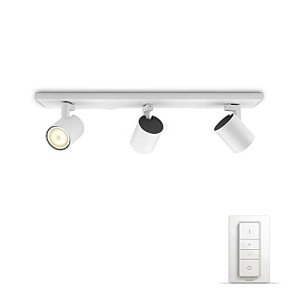What Do You Know About Contemporary Lighting UK?

Contemporary Lighting in the UK: Transforming Spaces with Illumination
Lighting plays an important role in specifying the atmosphere and functionality of any space. In Buy Spotlights UK , contemporary lighting has emerged as a significant design element, using innovative solutions that mix looks with usefulness. This short article dives into the various styles, products, and technologies shaping contemporary lighting, along with suggestions for choosing the most suitable fixtures for various settings.
The Evolution of Contemporary Lighting
Contemporary lighting in the UK reflects the altering tastes and technological advancements in style. It encapsulates a wide variety of styles, consisting of:
- Minimalist: Characterized by simpleness and tidy lines, minimalist lighting fixtures focus on form and function without unnecessary decorations.
- Industrial: Inspired by urban settings, industrial lighting integrates basic materials like metals and woods with bold designs, developing edgy, practical pieces.
- Scandinavian: Known for its heat and simplicity, Scandinavian lighting often includes soft colors and natural materials, concentrating on creating a relaxing atmosphere.
- Smart Lighting: This modern pattern integrates innovation with style, enabling users to manage their lighting with mobile apps, voice commands, or automation systems.
To highlight the development and range in the field of contemporary lighting, think about the table listed below, which highlights key attributes of various designs.
| Design | Key Characteristics | Popular Materials | Suitable Spaces |
|---|---|---|---|
| Minimalist | Easy, functional styles | Metal, glass, wood | Modern homes, offices |
| Industrial | Raw, incomplete appearance | Steel, concrete, wood | Lofts, galleries |
| Scandinavian | Relaxing, warm aesthetics | Natural fibers, light wood | Living spaces, coffee shops |
| Smart | Integrated technology, automation | Differs widely | Residences, offices, retail spaces |
Selecting Contemporary Lighting Fixtures
Selecting the right lighting fixtures for an area needs careful consideration of numerous factors. Here are crucial elements to remember:
1. Function of the Space
Before picking fixtures, think about the desired usage of the location. Various functions require different kinds of lighting:
- Task Lighting: Focused illumination for activities such as reading, cooking, or studying. Examples consist of table lamps and under-cabinet lights.
- Ambient Lighting: General lighting that supplies general illumination. Ceiling lights and pendant fixtures fall under this category.
- Accent Lighting: Designed to highlight particular functions or locations, such as artwork or architectural details. Wall sconces and track lighting prevail choices.
2. Style and Theme
The lighting should complement the existing decor. Go with fixtures that match or boost the total theme of the area, whether it's contemporary, rustic, or diverse.
3. Size and Scale
Consider the proportion of the lighting fixtures relative to the area. A big chandelier may look stunning above a roomy table, while smaller sized pendant lights work well in compact settings.
4. Energy Efficiency
With increasing energy costs and environmental concerns, selecting energy-efficient lighting choices is essential. LED lights are an outstanding choice, providing durability and lower energy consumption.
5. Flexibility
In modern style, adaptability is crucial. Fixtures that can be changed or rearranged improve performance, enabling users to develop different atmospheres as needed.
Popular Contemporary Lighting Brands in the UK
The contemporary lighting market in the UK boasts numerous brand names known for their ingenious designs and quality craftsmanship. Some notable mentions include:
- FLOS: An Italian brand celebrated for its artistic and iconic lights that often function as pieces of art.
- Tom Dixon: A British designer recognized for his modern, industrial designs that wonderfully incorporate metal and light.
- Anglepoise: Known for its versatile, functional lamps, ideal for a variety of settings from home workplaces to innovative studios.
- John Lewis: Offers a variety of contemporary lighting solutions that accommodate a wider audience, consisting of affordable yet elegant choices.
Frequently Asked Questions about Contemporary Lighting in the UK
1. What is contemporary lighting?
Contemporary lighting describes lighting designs and fixtures that reflect present design patterns, often identified by clean lines, ingenious shapes, and making use of modern materials and innovations.
2. How do I pick the best lighting for my home?
Think about the purpose of the room, existing decoration, size of fixtures, energy efficiency, and versatility. Examine how each piece will contribute to the overall atmosphere and performance of your space.
3. What are some energy-efficient lighting choices offered in the UK?
LED lights are the most popular energy-efficient choice, known for their long life expectancy and low energy usage. Compact fluorescent lights (CFLs) and halogen bulbs are other alternatives.
4. Where can I look for contemporary lighting in the UK?
Contemporary lighting can be found in different retail outlets, both online and in physical stores. Notable merchants include John Lewis, Habitat, and specialized lighting stores.
5. Can contemporary lighting operate in traditional areas?
Definitely! Contemporary lighting can improve traditional spaces when picked attentively. Selecting fixtures with a balance in between modern and timeless components can create a harmonious design.
Contemporary lighting in the UK represents more than just lighting; it embodies design development and creativity, changing areas and improving functionality. As trends continue to develop, property owners and designers alike can explore an expansive series of styles and innovations, ensuring that every room bursts with life, warmth, and character. By considering the important elements described in this post, one can curate a collection of lighting fixtures that resonates with individual design and meets practical needs, eventually forming comfortable and aesthetically appealing environments.

